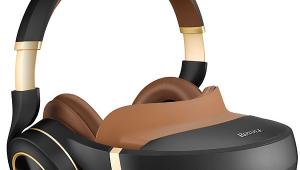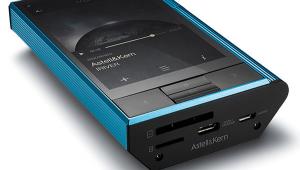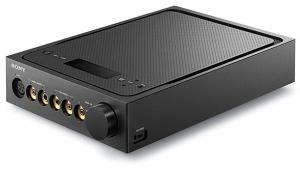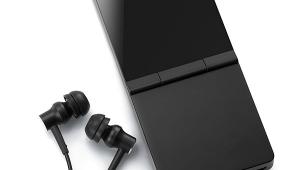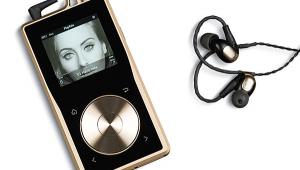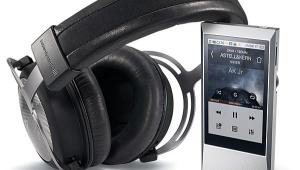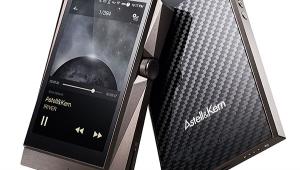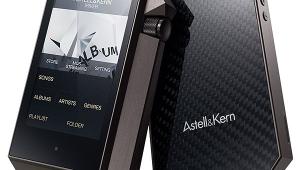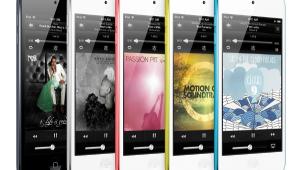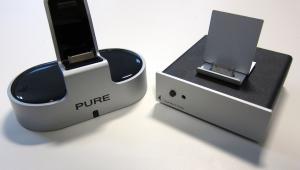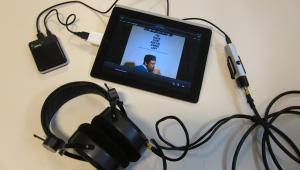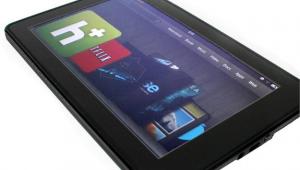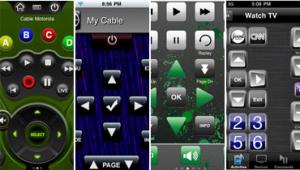When You've Gotta Go . . .
It happens to the best of us. You've just plunked down your hard-earned money to buy a dream home theater system, and you have to leave it. Maybe it's the vacation that, after months of planning, you suddenly want to cancel. Maybe it's the business trip you knew was coming and couldn't pawn off on a junior partner. Even worse, maybe your half-uncle, third removed, has passed on and left you his venomous-bee collection, which the terms of the will require you to pick up in person. Whatever the case may be, you're leaving, and your home theater is staying behind. Well, maybe not.

Because of advances in miniaturization (didn't you see Innerspace?), you can now take your home theater on the go, more or less. The biggest advance (as far as this article is concerned) is the drop in the cost of LCDs, thanks to the wonders of mass production. Thank you, Eli Whitney. This has created a new market for small, portable display devices—everything from color personal organizers to DVD players with built-in screens.
There are several manufacturers that currently make portable DVD players, but Toshiba's SDP-1500 has one of the largest screens available: It measures 8 inches diagonally. About the size of a large paperback book, the SDP-1500 is extremely portable and very versatile. The unit itself is 8.25 inches wide, 6.33 tall, and 1.125 thick, and it weighs 2 pounds. Attaching the Lithium-ion battery pack increases the height another inch and adds about a pound to the weight. The SDP-1500's price is about the same as its diminutive 7-inch brethren at $1,200.
The exterior is a smooth, silvery plastic that only hints at the excellent design inside. The screen flips up to reveal all the controls on the right and the DVD lid on the left. An arrow pad for navigating a DVD is right where your thumb would be if you were holding the player in your hand. Next to the arrow pad are the menu and play/pause/stop controls. The track-skip buttons also (thankfully) perform fast-forward and rewind functions when you hold them down. The setup controls are located along the top edge, including specialized buttons for the LCD mode (full, stretch, zoom, A/V out), display (screen and DVD setup), E.A.M. (type of audio out) and DVD-player setup.
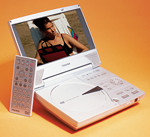 The Toshiba's ease of use is beaten only by its performance. Using technology similar to that which creates the vivid pictures on high-end laptop computers, the SDP-1500 has a bright, colorful display. The large screen can be viewed from virtually any angle with little degradation in picture quality. It's also very bright; however, like any LCD screen, it's no match for sunlight. I don't just mean direct light, either. The brighter the ambient light, the harder it is to see what's happening on the screen. There isn't quite as much detail as you'd expect from a CRT, but the picture quality is remarkably good. The slightly jagged edges, inherent in any LCD display, are only barely noticeable when the player is on your lap. Overall, the display is very watchable. Of course, if you just want to use the player with an external display, there are component, S-video, and composite outputs on the back. One thing to note is that, when this player expands nonanamorphic DVD images, the resulting picture quality is subpar. This only happens with images displayed on the LCD screen, though; the video-out remains unaffected. My review unit was a preproduction model; so, with any luck, this problem will be remedied by the time the unit goes on sale. An optical output rounds out the DVD player's functionality, while an A/V input lets you use the SDP-1500 as just a monitor.
The Toshiba's ease of use is beaten only by its performance. Using technology similar to that which creates the vivid pictures on high-end laptop computers, the SDP-1500 has a bright, colorful display. The large screen can be viewed from virtually any angle with little degradation in picture quality. It's also very bright; however, like any LCD screen, it's no match for sunlight. I don't just mean direct light, either. The brighter the ambient light, the harder it is to see what's happening on the screen. There isn't quite as much detail as you'd expect from a CRT, but the picture quality is remarkably good. The slightly jagged edges, inherent in any LCD display, are only barely noticeable when the player is on your lap. Overall, the display is very watchable. Of course, if you just want to use the player with an external display, there are component, S-video, and composite outputs on the back. One thing to note is that, when this player expands nonanamorphic DVD images, the resulting picture quality is subpar. This only happens with images displayed on the LCD screen, though; the video-out remains unaffected. My review unit was a preproduction model; so, with any luck, this problem will be remedied by the time the unit goes on sale. An optical output rounds out the DVD player's functionality, while an A/V input lets you use the SDP-1500 as just a monitor.
Audio is handled by two small speakers on the front of the unit and two even smaller speakers on the sides. When the E.A.M. is set to the Spatializer 3D (N-2-2) mode, the set of four speakers creates a pseudo-surround experience that works fairly well. The dialogue mode, obviously, boosts the film's dialogue level, which is excellent when a noisy car or plane ride makes it difficult to hear what's going on in the movie. There's also a 3D HP (N-2-2) mode for headphones, which I'll get to in a moment. If you want a little more privacy, there are two headphone jacks on the side of the unit (privacy can include two people, right?). While the Toshiba (and most other portable DVD players) has its own speakers, they are small and don't give you the best sound possible. Also, using the speakers lets everyone around you hear what you're watching, whether they want to or not. If the boombox craze of the '80s taught us anything, it's that people shouldn't be forced to listen to other people's audio. Headphones come in every shape, size, and color imaginable. While most people wouldn't trade their home speakers for even the best set of headphones, you can't bring your speakers on the plane to listen to them. "Do those fit in the overhead compartment, sir?" While there are too many standard headphones to give you even a small sampling here, there are only a few noise-reduction headphones.
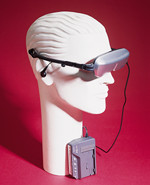 Noise-reduction headphones have been around for many years, but they've only recently come down in price. The NoiseBuster Extreme headphones by NCT are only $39, and they do a remarkable job of lowering annoying sounds to an acceptable level. Small microphones built into the earpieces take in sounds ranging from 20 to 1,500 hertz and send them to a small (about three-quarters the size of a cigarette pack) box that you can wear on your hip. This box sends an inverse-wave signal back to the earphones that can reduce the sounds in that range by about 15 decibels.
Noise-reduction headphones have been around for many years, but they've only recently come down in price. The NoiseBuster Extreme headphones by NCT are only $39, and they do a remarkable job of lowering annoying sounds to an acceptable level. Small microphones built into the earpieces take in sounds ranging from 20 to 1,500 hertz and send them to a small (about three-quarters the size of a cigarette pack) box that you can wear on your hip. This box sends an inverse-wave signal back to the earphones that can reduce the sounds in that range by about 15 decibels.
Koss also makes a set of noise-reduction headphones. At $199, the QZ-2000 headphones are quite a bit more expensive than the NCT model. To offset this price difference, they can reduce sound by almost 30 dB, but only between 20 and 1,400 Hz. The electronics box is larger than the NCT's and has no belt clip, but the unit does come with a carrying case. The Koss headphones are a tad more comfortable, and both sets sound very comparable. They sound similar enough (sans noise reduction) that your preference for either set will be a matter of personal taste. However, the differences become more apparent when the noise reduction is enabled.
